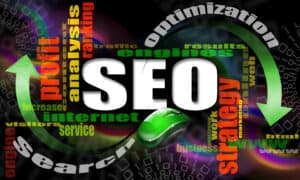
Table of Contents
What is the definition of Bounce Rate in SEO and How Can I Improve It?
What is the definition of bounce rate in SEO, and how can I improve it? Bounce rates are a measure of website visitor behavior. A high bounce rate indicates that visitors are not interested in the content on your website. In other words, they view only one or two pages before leaving. From an SEO perspective, a high bounce rate indicates that a site is not attracting continued interest. The more visitors that leave your website, the higher the bounce rate.
(Looking for Omaha SEO experts? Contact OMAHA SEO today!)

External links
Broken links can lead to a higher bounce rate and discourage visitors from returning to your pages. High bounce rates can affect your search engine rankings because web crawlers see a high bounce rate as an indicator of the quality of your content and will reduce your SERP ranking if your bounce rate is high. To minimize your bounce rate, make sure your site has a healthy balance between internal and external links. The former is vital for search engine optimization, while the latter is detrimental to your website’s ranking.
A website can boost its Google rankings by acquiring authoritative outbound links from other authoritative domains. While outbound links will not save you if you’re in trouble, they can increase your chances of ranking high for competitive queries. External links are also beneficial to Google ranking for competitive queries, such as those related to your industry or the topic of your blog. By acquiring authoritative outbound links, your website can reach higher search engine rankings and improve your traffic.
Ugly design
High bounce rates may sound like the end of the world. After all, you can still have a great website with a high bounce rate. It is important to remember that your website is a measure of your site’s performance, and high bounce rates are often desirable. However, you should not try to fix your high bounce rate by slowing down your site’s load time or making your content too complicated to read. These two factors can make users frustrated and leave your site without reading anything else.
High bounce rates are also a problem if your website is not designed well. People tend to judge websites first by their appearance, rather than by the content they contain. This is why an attractive, easy-to-use website will have a lower bounce rate. A page that is easy to navigate and has all the information a user needs to make a purchase is more likely to have a low bounce rate.
Misleading title tags
If you want to increase your website’s ranking, it’s important to make sure your title tag accurately describes the content of your page. If your title tag is too vague or doesn’t provide a lot of information about what your page is all about, Google will most likely rewrite it to be the brand name of the website. In addition to misleading searchers, this practice will hurt your rankings and lead to a bad customer experience.
In Google, your title tag and meta description act as your virtual billboard, and your content must match your keywords to appear high in SERPs. If your page is too short, it won’t make sense to advertise the best vacuum or the ultimate guide. Instead, include some white space in the title to help the reader break the page’s content. Otherwise, a visitor may not realize that your content matches their keyword query and leave the site without reading anything.



CONNECT WITH US!!